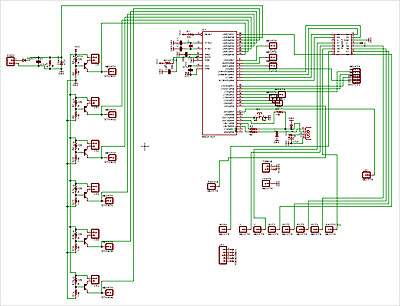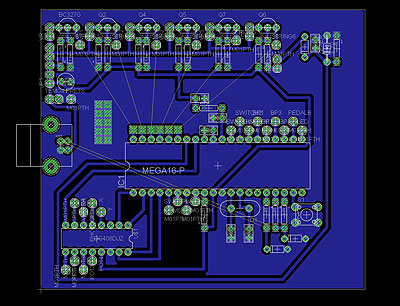Source
Introduction | Video | Photo | Music | Source
La Guitare à crayon is free hardware (as in “free speech” not “free beer”). This document as well as all documentation on the project (hardware designs, source code, …) is published under GNU GPL; you can redistribute it and/or modify it under the terms of the GNU General Public License.
Hardware:
- Atmega164p
- DG408DJZ (multiplex)
Schematic & Board (Eagle):
Software:
- Firmware based on Gnusb
- BootloadHID
- Pure Data external (need lots of work)
- Pure Data patch (basic)
Strings:
Solution by Michael Egger from Anyma.ch
Collector-Stabilized Biasing / Voltage divider biasing





Hi Bish,
The pitch is controlled by the 6 strings. So if you want to make a D chord, you will have to know the position of your fingers on the neck and then draw a vertical line on the tablet. This version is fretless, but i divided the neck to 16 notes corresponding to the fret’s position of a real guitar.
All the buttons, pots, ir, accelerometer, piezo, … can be assign to any control in pure data & gimp: fx, sound, octave and also for visual (changing color, changing layer).
I’m not the most competent of builders or programmers, or even a half-decent amateur, but I do have a decent understanding of the basics, so I’m not as interested in the source as I am in a simple explanation of how it works and what all the buttons etc do (especially the strings – ??? the tablet can control pitch, but you mention “6 analog strings giving around 10 bits of resolution.” on the introduction page – what are you using them for, and shouldn’t you be able to get 64bits out of 6 independent controllers?).
So no need to post the code and schematic (although I’m sure others would be interested – as would I) but a basic rundown of how you actually control the instrument would be good!